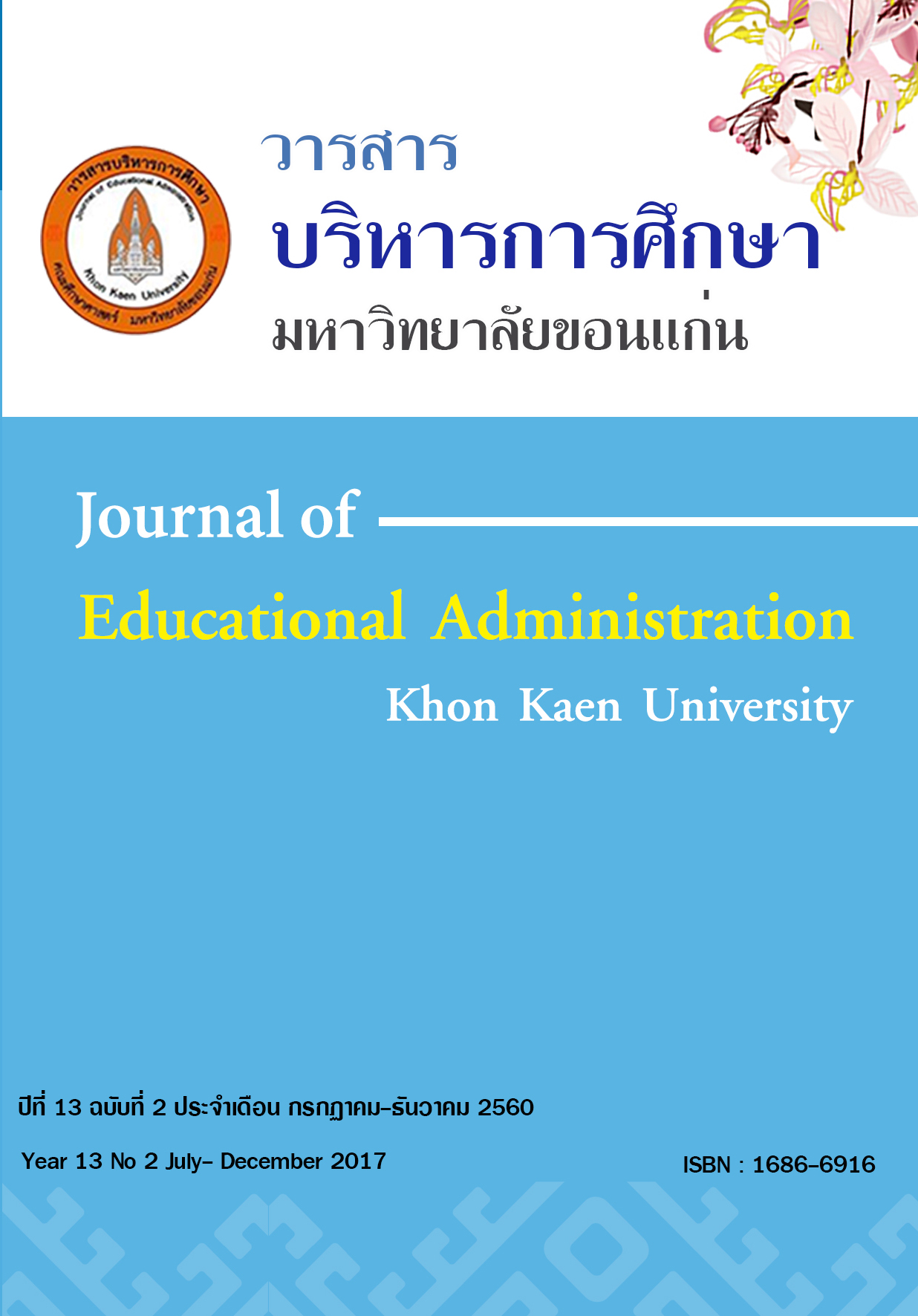THE DEVELOPMENT OF SUPERVISION MODEL TO SUPPORT CHILD-CENTERED LEARNING IN SCHOOL UNDER KHON KAEN PROVINCAIL ADMINISTRATIVE ORGANIZATION
Main Article Content
Abstract
The objective of this study is to develop the educational supervision style in order to improve learner-centered management of the schools under the Khonkaen provincial administrative organization. The study is split into 3 phases; 1) to study the background information, 2) to design and develop the model, 3) to test and evaluate the model. The subject groups are 26 teachers and 505 students which were chosen by purposive sampling. The study tools include interview form, test, evaluation form on supervision ability, evaluation form on classroom management ability, the group conversation record, observation form, and questionnaire form. The statistical tools are standard deviation, mutation, Wilcoxon Signed Test, and the data is analyzed by content analysis.
The study found that;
- The supervision is used in school by administrators with unobvious system. The problem conditions found that the supervisors have less expertise to guidance teachers advice. The development project is not agreeable with the activity. Teachers lack of skill in curriculum development and teaching technique. The school needs experienced and skillful teachers both teaching technique and curriculum development.
- The supervision model is reasonable and practical and related to the theory. The model is also verified by 11 experts. There are 5 factors 1) supervision principle and objective, 2) supervision process, 3) supervision mean, 4) supervisor, and 5) model using limit.
- The supervisors are knowledgeable and have ability in teaching supervision, comparing with during teaching and after teaching, the differences are statistically significant at 0.5. Trainee has a better ability in classroom management on learner-centered and the differences are statistically significant at 0.5. Learners show good attitudes on classroom management at a “very good” level, and teachers have satisfactory on using model at a “very good” level.


